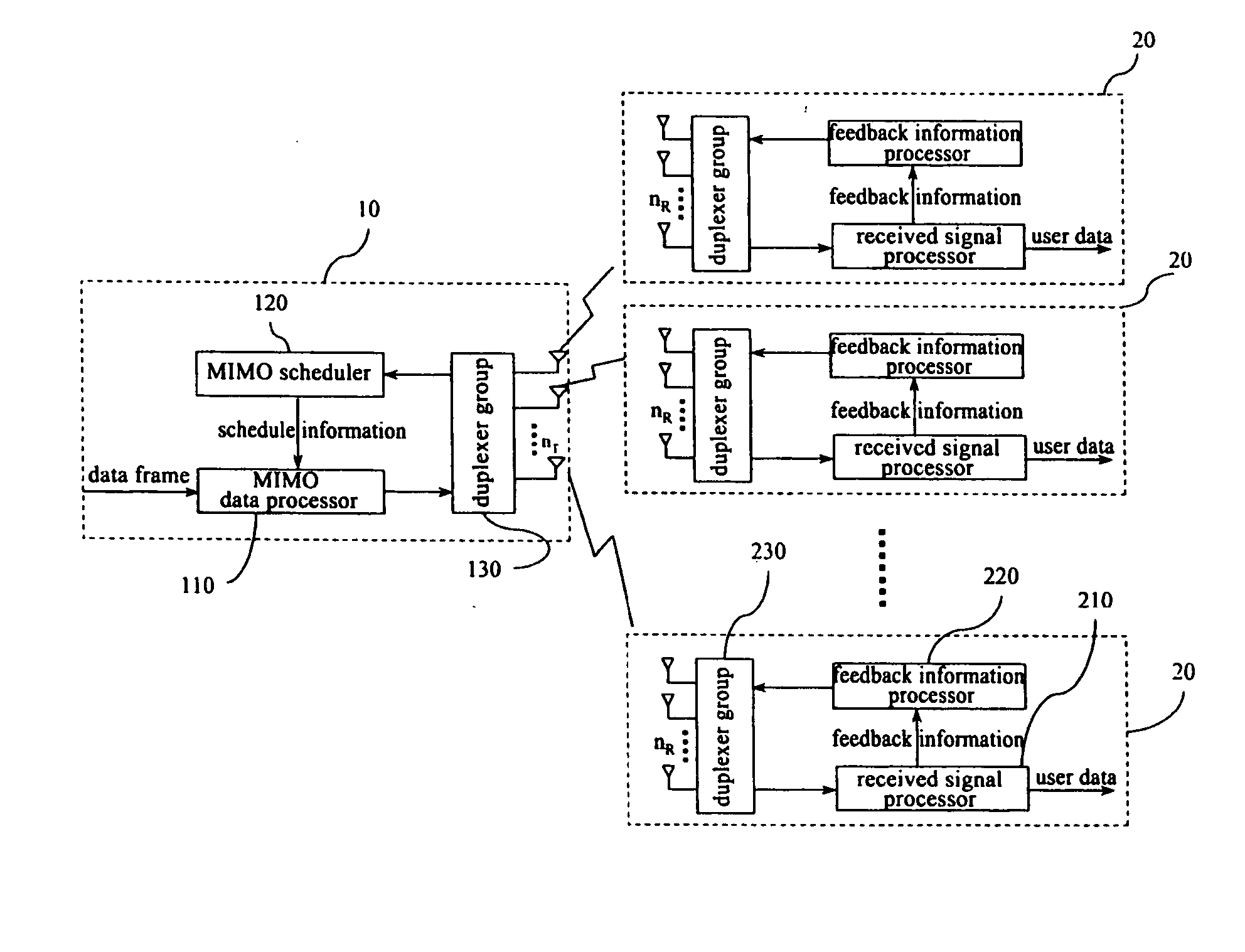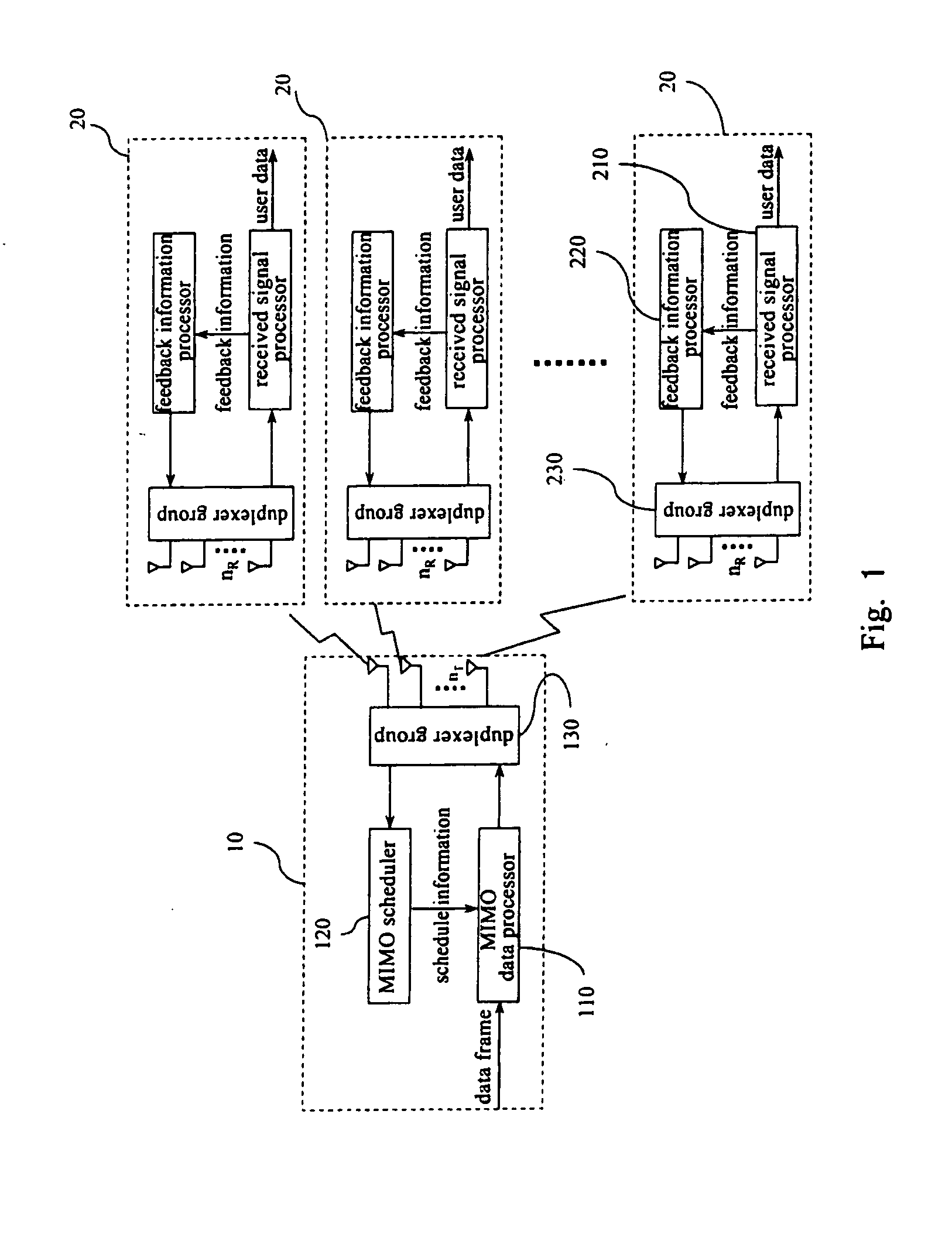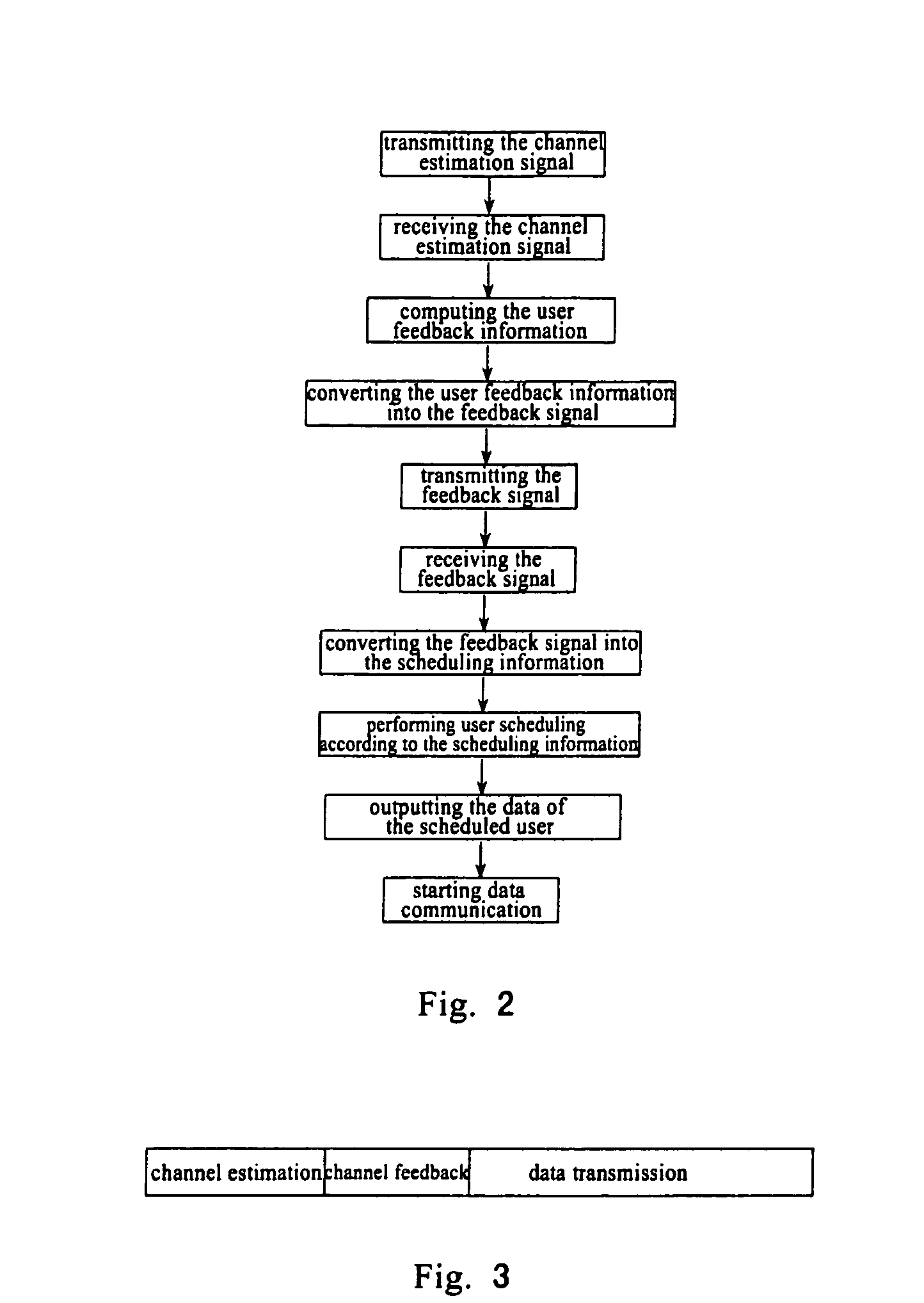MIMO communication system and user scheduling method
- Summary
- Abstract
- Description
- Claims
- Application Information
AI Technical Summary
Benefits of technology
Problems solved by technology
Method used
Image
Examples
first embodiment
The First Embodiment
[0045]FIG. 1 is a block diagram of the adaptive scheduling MIMO communication system based on the antenna selection, wherein the adaptive scheduling MIMO communication system includes a transmitter 10 (base station) and a plurality of receivers 20 (users). FIG. 2 is a flow diagram showing the adaptive scheduling of the MIMO communication system of FIG. 1. FIG. 3 is a schematic diagram showing the structure of the frame adopted in the MIMO communication system.
[0046]FIGS. 1-3 show the transmitter 10 includes a MIMO data processor 110, a MIMO scheduler 120, a duplexer group 130 and nT transmit antennas. Receiver 20 includes a received signal processor 210, a feedback information processor 220, a duplexer group 230 and nT receiving antennas. The number of receiving antennas of each receiver 20 can be different. The architecture of the frame includes: a channel estimation slot, a channel feedback slot and a data transmit slot. Other slots can be set according to the...
second embodiment
The Second Embodiment
[0090] The second embodiment of the present invention is the adaptive scheduling MIMO communication system based on beamforming. FIGS. 1 to 3 in the first embodiment can be referred to get some idea about the architecture, adaptive scheduling method and the frame structure of the MIMO communication system. Since the adaptive scheduling MIMO communication system in the second embodiment is based on beamforming, it is different from the adaptive scheduling MIMO communication system based on the antenna selection in the first embodiment in implementation. Next the MIMO communication system in the second embodiment will be illustrated in detail with reference to the drawings. The same number in the figure stands for the same element of the same or similar functions.
[0091]FIG. 1 shows the adaptive scheduling MIMO communication system based on beamforming includes a transmitter 10 (base station) and a plurality of receivers 20 (users). FIG. 2 is a flow diagram showin...
third embodiment
The Third Embodiment
[0123] The third embodiment includes the half adaptive scheduling MIMO communication system and the half adaptive scheduling method based on antenna selection according to the present invention.
[0124] The architecture of the half adaptive scheduling MIMO communication system based on antenna selection is approximately the same with that of the adaptive scheduling MIMO communication system and the differences are: the half adaptive scheduling MIMO communication system is required to compare the communication capacity and to insert the feed-forward information (suppose to be 1 bit and of course can be multiple bits) in addition to produce scheduling information, so the scheduler is required to be configured correspondingly. The feed-forward information is inserted or multiplexed by a multiplexer ahead of the channel estimation signal (i.e. the data of the channel estimation signal increases the length of the feed-forward information), and then the feed-forward inf...
PUM
 Login to View More
Login to View More Abstract
Description
Claims
Application Information
 Login to View More
Login to View More - R&D
- Intellectual Property
- Life Sciences
- Materials
- Tech Scout
- Unparalleled Data Quality
- Higher Quality Content
- 60% Fewer Hallucinations
Browse by: Latest US Patents, China's latest patents, Technical Efficacy Thesaurus, Application Domain, Technology Topic, Popular Technical Reports.
© 2025 PatSnap. All rights reserved.Legal|Privacy policy|Modern Slavery Act Transparency Statement|Sitemap|About US| Contact US: help@patsnap.com



